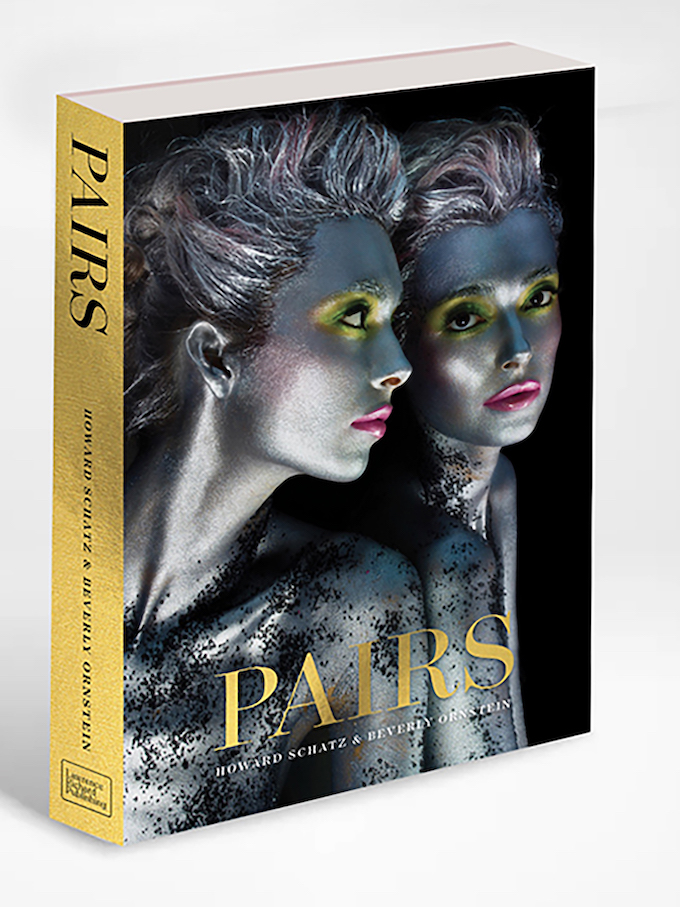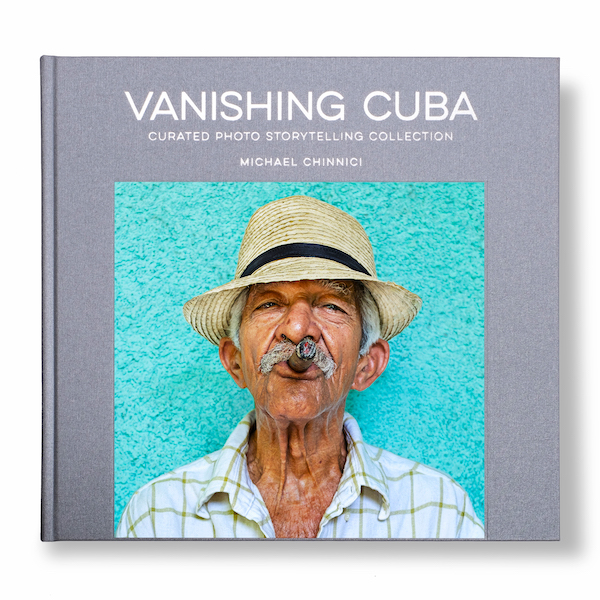Book Reviews
Photo Books to Love: New Titles By and About Women
November 17, 2022
This month, we delve into some of the new releases by women photographers—like versatile portraitist and documentarian Lynn Goldsmith—to tomes about them, including World History of Women Photographers and compelling selections on Vivian Maier and Carrie Mae Weems.
Music In The ‘80s
By Lynn Goldsmith
Rizzoli
352 pages | $75

Photographer Lynn Goldsmith’s Music In The ‘80s (released in September) is not just another coffee table collection of rock ‘n roll photography. Flip through a few pages and you’ll find, among the 250 vivid captures of the Grammy-winning crowd, something more complex—the work of a thoroughly versatile portraitist and documentarian.
The operative word here is “versatile.” Goldsmith’s imagery resolutely defies pigeonholing. Once asked to characterize her “style” Goldsmith replied, “I don’t have a style…to me, the camera is a tool. It helps me to manifest my ideas…” Her latest monograph showcases that creative independence. And she couldn’t have chosen a better era in which to do it than the “genre-bending” epoch of the ’80s.

The birth of MTV in 1981 practically weaponized visual imagery as an integral function of commercially sold music. Almost overnight, the experimental medium of music videos began to reset the bar higher and higher for outrageous visuals—performers’ gaudy wardrobe and coifs, flashy album cover art and neon-and-laser-driven live concerts. The music itself was a kaleidoscope of styles that put Punk and New Wave, in orbit around Heavy Metal, Hip-hop and balladeers like mellow Billy Joel and explosive Bruce Springsteen. There was Eric Clapton, in-your-face Frank Zappa Grace Jones, Pat Benatar, down home Dolly Parton, and countless more—all and many more are represented in this snappy anthology. The ’80s were a crazy quilt of unique, breakthrough artists, perfectly suited to Goldsmith’s faculty for turning on a dime between totally different subjects, and deploying her diverse toolkit of techniques and creative choices. It all depended on the singular idiosyncrasies of the subject in front of her lens.
[Read: U.S. Copyright Office Backing Photographer in Supreme Court Case]
Among all the great photography on these pages, images made in concerts, rehearsal halls, and in photo studios—the breadth of Goldsmith’s technical and esthetic approaches to the performers of this era is inspiring. And just as important, it’s instructive, showing off lighting styles, poses and especially the obvious ease of Lynn’s interaction with probably the most self-aware portrait subjects on the planet. All of this is more than ample reason for every serious shooter to add Music In The ‘80s to their library.
A World History of Women Photographers
Edited by Luce Lebart and Marie Robert
Thames & Hudson
504 pages | $85

Other than the obvious sex distinction, is there supposed to be a difference between men and women behind the camera? Sadly, there has been, in the past anyway, the persistent illusion of such a difference, harshly expressed by one myopic critic as “an abyss: femininity.” A World History of Women Photographers dispels that slander in the best way possible—by profiling the lives and work of extraordinary distaff photographers from the Victorian age to the present.
[Read: Photo Books to Love: 3 Powerful Portrait Collections]
Historically, women have faced pretty much the same obstacles to participating and succeeding in the craft of photography, as they have in so many other pursuits. In spite of all that, there’s a solid list of great women shooters who’ve worked through those obstacles—Julia Margaret Cameron, Dorothea Lang, Margaret Bourke-White, Lee Miller; Diane Arbus, Annie Liebovitz and so many more. Photography has indeed had its share of female superstars.
But beyond big names like these are scores of other brilliant female photographers who have added immeasurably to the world’s photographic legacy. Names like Lissette Model, Eve Arnold, Mary Ellen Mark, Tina Modotti, Sarah Moon, Imogen Cunningham, Graciela Iturbide, Isabel Muñoz, Judy Dater, Cindy Sherman, and scores of others—300 in total in this encyclopedic take on the subject—some familiar to the whole industry, some just known to enthusiasts or other photographers of their era, and many, however brilliant, prolific and, original as they are, obscured by anonymity. A World History of Women Photographers means to shine some light into those shadows.

The authors undertook a staggering task with this book, curating 450 images to create an eclectic visual feast and then adding critical essays by 160 different women writers into the mix. Of course, when one of the early chapters begins with the title, “A Long Tradition of Being Ignored,” there looms the possibility that this hefty, family bible-sized tome might just be an enormous political manifesto. But the book is not just about lamenting establishment injustices or even correcting them. Its true focus is elsewhere. It teems with fascinating mini-biographies and introduces us to a truly inspiring cast of characters.
Vivian Maier
By Anne Morin, Christa Blümlinger, and Ann Marks
Thames & Hudson
256 pages | $65

Another book on Vivian Maier? As a photographer, you’d practically have to be from Middle Earth to not know this woman’s remarkable saga. In any case a précis is in order: About ten years ago, the contents of a certain abandoned storage locker in Chicago were auctioned off to the highest bidder, and the subsequent sale launched the appearance of photography’s newest folk hero.

The buyer was amazed to find among his dusty purchases, an enormous stash of prints, negatives, and undeveloped film that, on closer scrutiny, comprised over 150,000 images. It all later turned out to be the work of one person, an obscure full-time children’s governess and compulsive amateur shooter named Vivian Maier. The amazing part? The work was very, very good, most of it a fresh, surprisingly inspired species of street photography, some sardonic and some a bit melancholy, but all of it the product of an apparently undiscovered virtuoso. Maier unfortunately died before she would receive any recognition. But in no time, she was being rhapsodically praised by critics and curators who put her on a par with past masters of this raw and demanding imaging style—names like Robert Frank, Garry Winogrand and Joel Meyerowitz. As a quirky discovery, she quickly became public property—the “Nanny Photographer,” a kind of cross between Diane Arbus and Mary Poppins.
That‘s the gist of the story to date, but now it continues: Amidst the flood of attention Maier and her remarkable work have received—numerous articles, an Academy Award nominated documentary and at least eight books—yet another title is on the bookshelves, simply titled Vivian Maier. It’s a meticulously reproduced and well-paced retrospective collection of the Nanny Photographer’s best images. The pictures run portfolio style in the center of the book, with text essays by authors Anne Morin, Christa Blümlinger, and Ann Marks bracketing an uninterrupted stream of photos. These have been organized, not by date or by city (Maier worked mostly in New York and Chicago), but by theme.
[Read: Fall 2022 Photo Exhibits to Mark in Your Calendar]
The first all-important section is devoted to Vivian’s fascination, and some say obsession, with self-portraits, many using mirrors and window reflections. These most probably represent a device for asserting herself as a woman and as a photographer in a world that wasn’t giving her much positive feedback as either.
Other thematic chapters cover subjects like: “Streets,” and her sensitivity to urban hubbub and seemingly ceaseless movement of city dwellers; “Portraits,” her frank, unapologetic interactions with people, some open, some self-conscious, often, in the case of upscale older women, critical of their haughtiness or their pretentious wardrobe; “Gestures,” her acute sense of the nuances of human posture and personal habits of someone holding their hands a certain way, or tugging on an unruly bit of clothing. There are sections devoted to “Color” and “Cinematic” tableaux that crop up in daily life, another on her most personal specialty, “Childhood”, and finally, her observations of abstract “Forms” in the most prosaic, mostly unnoticed details of city life.
Nothing, of course, went unnoticed by Vivian Maier’s keen sensory array, which naturally included her trusted ever-present twin-lens Rolleiflex. And fundamentally it was this act of noticing that was her true passion. Notice everything—that seems to be the message for all of us, from one of our most gifted colleagues, someone acclaimed around the world…just a little too late.
Carrie Mae Weems: A Great Turn in the Possible
Text by LaCharles Ward, Fred Moten
Artbook
288 pages | $75

She’s thought of as a photographer—a gifted one at that. She’s been named Photographer of the Year by the Friends of Photography and has taught photography at several colleges (she currently holds the three-year resident professorship at Syracuse University). But the multidimensional career of Carrie Mae Weems defies being labeled simply,“ photographer.” There’s excellent evidence of this in the absorbing new retrospective, Carrie Mae Weems: A Great Turn in the Possible.
This annotated monograph reveals Weems in her true, holistic role, beyond pure photography, as one of America’s most influential multimedia artists. She works in fabric, text, audio, installations and video, nearly all of it anchored in digital imagery. This latest book is a kind of Rosetta Stone to her complex creative identity. An apt capsule description of that persona comes from The New York Times’ Holland Cotter. Writing about the book, he characterized Weems as “a superb image maker and a moral force, focused and irrepressible.” You’ll agree with that the first time you open the pages of A Great Turn in the Possible.

It’s important to know, going in, that the powerful character behind Weems’ work was preloaded from birth. She’s a black female in America—predestined to undergo the lifetime experiences behind her multiplex messages. One classic example in the book is her cinematic series, Kitchen Table, a series of starkly photographed, self-acted mini-dramas that suggest a downscale home in a poor community, and, in her words, question “ideas about the role of tradition…the nature of family…relationships between men and women, between women and their children…”
In another series, Slow Fade to Black, images of African American female entertainers of another era, such as opera diva Marian Anderson and blues singer Billie Holiday, are racked out of focus in a metaphorical reference to the struggles of black entertainers to remain visible and relevant.
In one of Weems’ best known works, From Here I Saw What Happened and I Cried, contemporary Civil War era wetplate images of blacks in this country—some slaves—are pressed behind red-tinted glass and vignetted to create a disturbing take on that inescapable phase of every black person’s personal legacy.
A Great Turn in the Possible brims with powerful essays like these. Whether they’re created from Weems’ own shots or the work of others, she blends them into a single pool of observations on a motif that remains crucial now and in everyone’s future, black or white.




